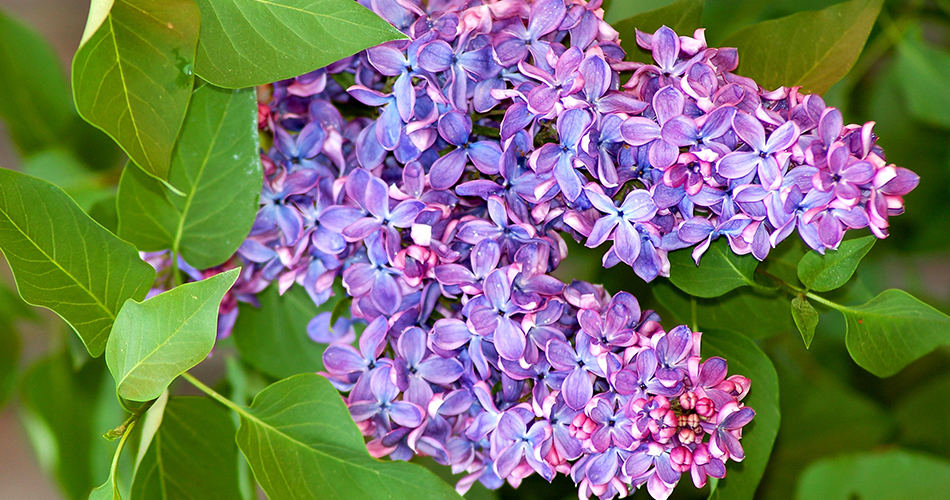Lilac. A beautiful and fragrant shrub, the lilac is one of the most popular of garden plants. Its pyramidal clusters of blossoms are white, lavender, blue, violet, pink, or purple. There are both single and double varieties—all with glossy green leaves.
Lilacs are native to Eastern Europe and Asia. The colonists brought them to America. They are often planted in groups to form masses of shrubbery or hedges. Some famous lilac gardens which display several hundred varieties are the Lemoyne gardens at Nancy, France; the Arnold Arboretum at Jamaica Plains, Mass, the gardens in Highland Park, Rochester, N. Y.; and Lilacia Park in Lombard.
Lilacs grow best in full sunlight, nonacid soil, and where there is good drainage. They need a winter freeze to provide a dormant, or rest, period. Single shrubs, given plenty of room, grow full and tall, reaching a height of 10 to 25 feet. For maximum bloom, however, they should be kept to a moderate height. Pruning back young growth to keep the interior open also helps flowering.
Lilacs belong to the olive family, Oleaceae. The name of the genus, Syringa (“little pipe”), was given it because lilac stems were once hollowed out and used as pipe stems. Syringa is also the common name for an unrelated shrub, the mock orange. The scientific name of the common lilac with purple flowers is Syringa vulgaris; of the Persian lilac, a smaller shrub with white flowers, Syringa persica.
LILAC (li’lac) is probably the best-known deciduous shrub in cultivation. The common lilac, with clusters of fragrant light purple (or white) flowers, has been grown in European gardens for hundreds of years. It was grown in England by 1597, and in North America by 1750.
Members of the ash family, most lilacs have many stems that branch just above the ground. The shrubs have stout green buds with scales. The smooth leaves are heart-shaped and about three inches long.
There are more than 20 cultivated species of lilacs, many hybrids, and hundreds of varieties. Lilac shrubs grow from six to twenty feet tall. Their tiny four-lobed single or double flowers grow in dense clusters and usually are fragrant. They may be white, pink, lavender, dark purple or deep red. The fruits are clusters of dry, woody pods.
Lilacs grow best in open sunny places, in fertile well-drained soil. They are hardy and long-lived, often growing without care for years. New plants can be started from seeds, suckers (shoots from the roots), cuttings, or layers (branches bent down into the soil). Fall is the best time to plant or move the shrubs.
Lilacs are grown in most parts of the United States and in many other countries. Most northern hemisphere lilacs blossom in May and early June.


Be First to Comment